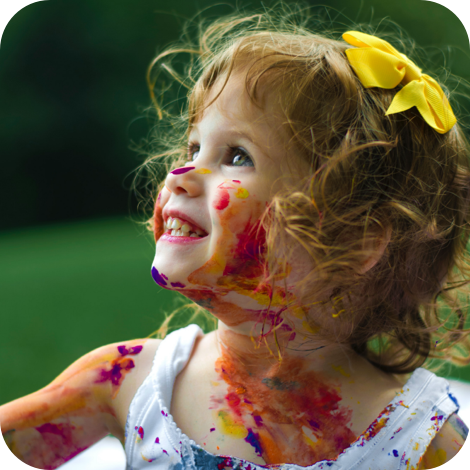Photo by David Rangel on Unsplash
This month’s newsletter uses a case study to show how a reliance on deep pressure as the only regulator can be problematic, and to demonstrate the early intervention used at Pendle View School, Colne, Lancashire for a young boy in reception to address this difficulty and the resulting behaviours.
(The child’s name and image has been changed to maintain confidentiality)
Zain
Zain started in reception and initially appeared to be able to regulate himself quite independently, although engagement in learning opportunities within the school environment remained minimal. He displayed obvious sensory processing difficulties. Zain continually sought oral motor stimulation and was focused on eating and chewing non-food items. He sought deep pressure, attempting to direct staff to squeeze on his arms, legs, and torso. Zain would then squeeze staff and then frequently would start headbutting and hitting his head to gain more deep pressure. He appeared to be distressed and unregulated. Zain would seek vestibular input, but this could also result in him becoming dysregulated.
We decided it was important to complete a further analysis of Zain to unpick his sensory processing needs and ensure he had a toolkit to meet his sensory processing needs effectively which would then enhance his regulation and engagement in all areas throughout the day.
After a period of observation, assessment and conversations between Stephen and Hayley as well as input from Julia Dyer, we found that for Zain there never seemed to be enough deep pressure for him. He would continually seek more and more, and when this need wasn’t met he would display as unsettled, dysregulated and pre-occupied with obtaining deep pressure either from staff or by hurting himself. Additionally, vestibular input alone did not help Zain become regulated. We found proprioceptive input to be key in ensuring his sensory processing needs where met. We decided to put a redirect strategy in place, meaning if he was requesting deep pressure we would redirect to a proprioceptive activity, so for example we had trampoline available, scooter boards in the adjoining room and outside play, or class staff would encourage him to run walk round the grounds and in school with staff.

Zain also came to individual sensory regulation sessions twice a day for 20 minutes each in our specialised sensory processing rooms. Zain’s programme within these sessions is focussed on giving Zain the vestibular and pressure-based elements he is looking for within a core proprioceptive activity, such as holding his weight up prone over a foam roller (like a wheelbarrow position) and pushing himself back. He also used the hip hop cushion for bouncing. He uses the cross trainer for some pure proprioceptive input, and he was and still is really responsive to this activity. Another activity with both vestibular and proprioceptive input, was lying on the platform swing on his front collecting either bean bags or favoured toys up by walking on his hands. We also used the scooter boards as they had been doing in class.
After his session, he would then go back to class and Zain was calmer and more able to engage purposefully in the learning opportunities presented to him cross-curricular. His engagement increased and had a positive impact on his ability to attend to stimuli and investigate them consistently.
Outcomes
We kept a record of how Zain presented following his focused sensory processing sessions concentrating on his engagement in the learning activities. We found that it had a positive impact and as he progressed, he met an increasing number of targets. We kept a tally in class if Zain presented with any dysregulated or maladaptive behaviours (eg becoming upset, headbanging) and there was a clear correlation between Zain being regulated and a significant reduction in any behaviours presenting as he settled throughout the whole day. He has a chew at all times which he uses independently and this has meant he doesn’t seek to chew and eat non-edible items as much. Staff worked closely with him to engage in appropriate proprioceptive work at regular points and as this became more established he became more independent in recognising his own sensory needs and seeking to regulate himself with appropriate sensory processing activities. Equipment was available for him throughout the school day in class for him to access eg Zuma Rocker, peanut roller, trampoline, a balance track. Family also noticed a positive impact at home and were implementing things at home to help Zain eg, taking him for walks, visits to the park, and trampoline. They noted he is much happier within himself.
- It was amazing to see the difference in Zain as his sensory processing needs were met:
- Seeing him explore the environment independently with intent consistently was amazing to see.
- Seeing him understand his own sensory processing needs and implement this with increasing independence.
- Seeing Zain settled and happy throughout the day.
- Massive reduction in negative behaviour- using chew and not seeking non-edible items much.
A huge thanks to Hayley Sherliker & Stephen Lorimer, Pendle View School, for writing and sharing this case study.



